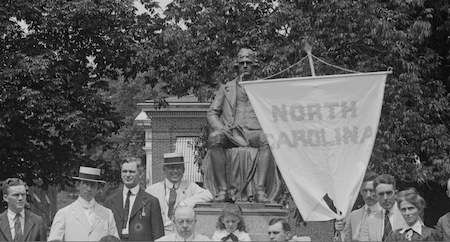I wasn’t expecting to do another mix so soon after the last one (the business), but this one was kicking around for a while. As always, I was throwing songs I liked to listen to into a temporary playlist called “next,” but couldn’t figure out how to link them all together. Then one day I heard a recording of Kenyan girls singing (like so much these days, it surfaced out of my library on shuffle), and I said “Hmm.” I threw a handful of short world music songs into the mix (from an album of Tuvan throat singing, an Internet-curated collection of African music, and a historic field recording of the Bera pygmies from the 1950s), shuffled them about until I got the right order, and before long I had something that seemed set to shuffle into the ear in the same way that the songs had wormed their way into my mind. An attic space overgrown (also on Art of the Mix) was the result.
The mix:
- Chemirocha [Kipsigis] w/Chemutoi Ketienya & Girls – Kenyan Songs and Strings (Kenyan Songs and Strings)
- Strange – R.E.M. (Document)
- Rolling – Soul Coughing (El Oso)
- Vessel – Zola Jesus (Conatus)
- Bodhisattva Vow – Beastie Boys (Ill Communication)
- Right On – The Roots (How I Got Over)
- Yraazhy Kys (The Singing Girl) – Shu-De (Voices From The Distant Steppe)
- The Eraser – Christian Scott (Yesterday You Said Tomorrow)
- Harrowdown Hill – Thom Yorke (The Eraser)
- Jean-Baptiste à la fenêtre – Sonic Youth (Simon Werner a Disparu)
- Tshetlha Di Kae – School Girls In Kayne (Tswana and Sotho Voices)
- Half Way To Crazy – The Jesus & Mary Chain (Automatic)
- Infinity Guitars – Sleigh Bells (Treats)
- Staircase – Radiohead (The Daily Mail & Staircase)
- One Big Holiday – My Morning Jacket (It Still Moves)
- Skipping Song – Bera Pygmies (Music Of The Rainforest Pygmies)
- Antenna – Sonic Youth (The Eternal)
- Hikikomori – Zola Jesus (Conatus)
- Silver Rider – Robert Plant (Band of Joy)
- You See Everything – Low (C’mon)
- Moorestown – Sun Kil Moon (April)
Track notes:
- I finally heard the original version of “Strange” (on Wire’s Pink Flag) last year, and while I love it, it made me appreciate the R.E.M. version I heard in high school–bravura, loud, beery, and outré.
- It’s a pity that Mike Doughty has disavowed the Soul Coughing discography, because tunes like “Rolling” were made for delicious cognitive dissonance–the luxury and assonance of the words and the thick beats…
- Zola Jesus was a discovery for me about this time last year. “Vessel” is the strangest arrangement of the album, with Nika Roza Danilova’s voice hocketing into the echoing void at the opening over a sort of middle-period Dead Can Dance accompaniment. And that’s just the opening.
- I miss Adam Yauch.
- “Right On”: Who knew that Joanna Newsom made such a good chorus for hip-hop?
- Christian Scott’s “The Eraser,” its strikingly original jazz arrangement of Thom Yorke’s original, has been in heavy repeat since I heard the album last year. The whole album is worth checking out.
- “Harrowdown Hill” gives you an opportunity to hear Yorke’s original glitchy percussion against the jazz acoustic original. Not as starkly tense as some of Radiohead’s earlier (or later) works, it feels a little more personal but still despairing.
- Sonic Youth’s final(?) recording, a soundtrack, carries enormous tension throughout it even if you don’t understand the cinematic context of the songs, which, um, I don’t. Still absorbing.
- I dug out “Automatic” the other day–still a great album all these years later.
- I found Sleigh Bells thanks to Molly Young‘s plug for the band (she plays the gum-chewing cheerleader in the video for this song). I like the second album better as an album but “Infinity Guitars” is still an astonishing kick to the head.
- Someday Radiohead will make a full album that “Staircase” fits into and I’ll be a happy man.
- My Morning Jacket’s It Still Moves was the last of the early albums and the one I love best, I think. This one reminds me of growing up in the South.
- Robert Plant’s cover of “Silver Rider,” from the underappreciated Low album The Great Destroyer, is both hypnotic and wholly respectful of the original.
- Low’s most recent album is the one I’ve liked best since The Great Destroyer. “You See Everything” is a great spotlight for Mimi Sparhawk’s voice.
- Finally we get to “Moorestown.” After the psychedelic wonderland of Ghosts of the Great Highway, it took a long time for Sun Kil Moon’s acoustic albums to grow on me. But this one had been waiting to find me, and today I realized it was the closer.
Finally, a note on mixes: Seems to me that I put them together to digest the music I’m listening to and to claim it before it claims me.








